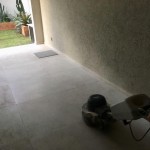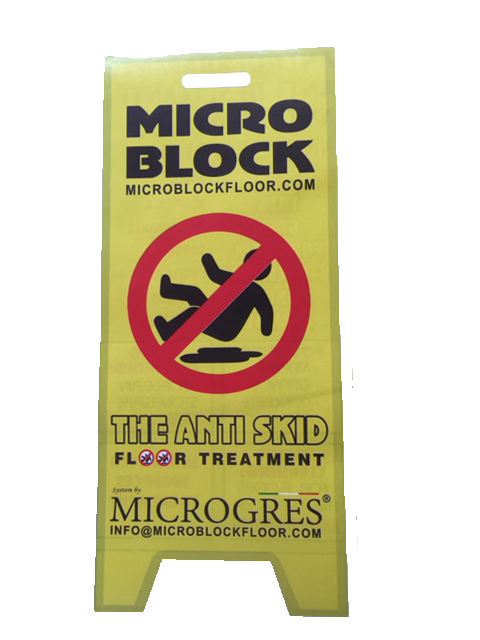News
OUR STAND IS 765A

Welcome to our company
We provide non-slip treatment services for floors with professional application. Non-slip floor treatments and slip resistance (friction coefficient) testing services (in the laboratory and in the field) help prevent slips and falls.
As leading experts in sliding resistance testing in the Americas, we also keep you up to date on the latest slip resistance testing standards.
We offer the best solutions available to make any floor much safer when dry and / or wet.
Do not wait for an accident … call us now to make your floor secure and get a certified sliding resistance test report of the results!
Services:
SPECIFIC FLOOR TREATMENT FOR CERAMICS AND PORCELAIN
Polishing:
- MARBLE
- GRANITE
- CONCRETE
- TERRAZZO
Micro
Polishing:
- PORCELAIN STONEWARE TILES
Heavy Cleaning:
- FOR FLOORS AND SUFACES
- GRAFFITI REMOVAL
Nano Tech
Surfaces
Treatment

Floor Treatments
Micro Block The Anti Skid by Microgres® is our new product to treat slippery floors.
According to our know-how and technical knowledge of product applications, we have several types of solution to satisfy the requirements of customers for each type of surface.
We make the application in pavements of various types, boxes, showers, gourmet areas, ramps, besides the application of adhesive tapes in stairs of public, private, and industrial use.
The speed in execution is guaranteed, specialized and trained professionals besides the durability and effectiveness of the product.
After the application one can step on immediately.
Applied by professionals specialized in the sector, our product Micro Block The Anti Skid minimizes the falls and risks of accidents.
This treatment is invisible, and does not alter the texture of the material, color of the floors. Creates better traction and friction helping the floor to be no more slippery.
It is a product of easy application, versatile, resistant.
In order to keep the floors safe, after the treatment, proper maintenance is required for each type of surface for the removal of detergent / soap residue after each cleaning.
The treatment can be applied in commercial areas, for industrial applications and where there is intense traffic of people such as hospitals, hotels, malls, schools, restaurants, public buildings, private buildings, supermarkets, airports, saunas, swimming pools, etc.
Portfolio
Check out some of our work done to make the floor safe.























Advantages of Micro Block The Anti Skid Treatment
- Minimizes the risk of accidents with falling.
- Cost reduction and fall prevention.
- Important for hospitals, kitchens, food and other bacteriologically sensitive areas).
- Ready for pedestrian or vehicular after the application, reducing commercial or manufacturing downtime to a minimum.
- Potential reduction of insurance premiums or insured losses with non-slip floor.
- Suitable for indoor and outdoor areas.
Slip Resistance Test Patterns and Safety Criteria
Basic notions:
To assess the safety related to slipping, we need to
(a) a slip resistance test method and
(b) a minimum safety numerical criterion, for example, 0,42, 0,50, 0,60 etc … to apply to the results of the slip test.
If the floor is likely to be lubricated with water, grease, etc., in use, it must be secure (non-slip or non-slip) under expected conditions of use. Resistance to dry slip is not an indicator of wet slip resistance – in fact, they generally vary inversely – so the wet slip resistance test is generally necessary.
Usefulness of the dry slip resistance test
The dry slip test can also be useful with or without wet testing.
There are several reasons:
(1) dry tests followed immediately by wet tests on the same floor may help demonstrate that the slip resistance test method is capable of measuring high and low values on the subject floor;
(2) a floor may be dry and look clean but be slippery due to a thin layer of contaminant, for example, fat in or near a restaurant kitchen or parking structure;
(3) Dry data can help diagnose issues such as over-spraying of furniture, improper maintenance, cooking fat in the air that settles on the floor at night, etc .;
(4) a small rare spill on a normally dry floor may have occurred very recently for the defendant to reasonably have discovered and cleaned it; and (5) many slip and fall claims are made involving dry floors. The actual cause of slip and fall can be footwear, substance abuse, illness or many other factors not related to the floor. Dry tests – particularly before the alleged accident and on a regular monitoring basis (traction audit) – can help establish that the tread was safe (or non-slip) when dry.
Slip testers that are valid for the proper purposes today are:
- BOT-3000E for fast test on site, automatically documented, static and dynamic dry and wet tests with various test foot materials available.




